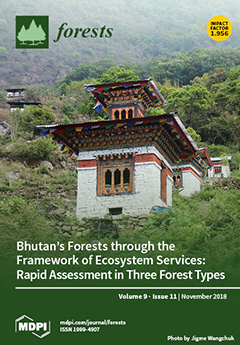The embryos of
Ginkgo biloba L. are generally reported to undergo after-ripening and be underdeveloped at the time of dispersal, which suggests that the seeds have morphological dormancy (MD) or morphological physiological dormancy (MPD). The aim of this work is to determine whether embryos of a
G. biloba population are well-developed at the time of seed dispersal, and whether the seeds are dormant or not. From 8 September, which was the 140th day after flowering (140 DAF), seeds were collected separately from trees (T) and the ground (G) every 10 days until 7 December (230 DAF), resulting in a total of 10 samples. The changes in vertical diameter, transverse diameter, fresh weight, water content, and embryo length during seed development were measured. Simultaneously, the effects of different temperatures (15, 25, 30, and 35 °C) on seed germination, dormancy, and germination characteristics of
G. biloba seeds were studied. Results showed that the embryos of
G. biloba seeds were well developed and had no morphological dormancy. On 18 September (150 DAF), embryos were visible with a length of 2.5 mm. On 7 December (230 DAF), at the time of seed dispersal, their length was 17.1 mm. The germination percentage of the isolated embryos and seeds increased as the delay in seed collection increased, but there was no significant difference between T and G (
p > 0.05). On 7 December (230 DAF), the germination of the isolated embryos reached 98%, indicating that the embryos were nondormant. Without pretreatment, seed germination was 82.57% within four weeks at 25 °C. Furthermore, the germination test at different temperatures showed the highest germination percentage at 30 °C (84.82%). Obviously, the
G. biloba seeds were nondormant. The mean germination time (MGT) of the seeds at 30 and 35 °C was significantly lower than that of the seeds at 15 and 25 °C, and the speed of germination (SG) was significantly higher than that of the seeds at 15 and 25 °C. Although there was no significant difference in the seed-germination percentage between 30 and 35 °C, a portion of the seeds (9.5%) rotted at 35 °C. Therefore, 30 °C was the most favorable germination temperature for
G. biloba seeds. This is the first study that reports
G. biloba seeds with no dormancy.
Full article





